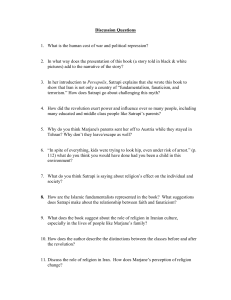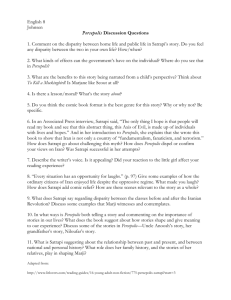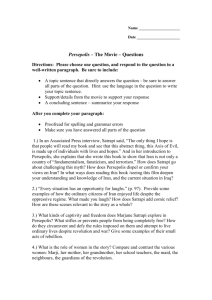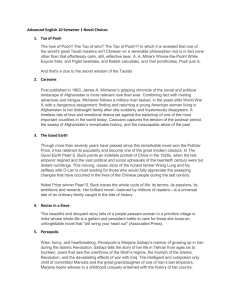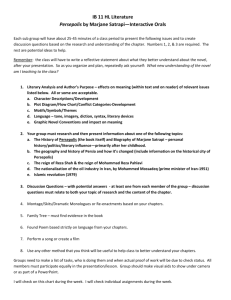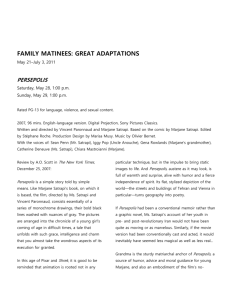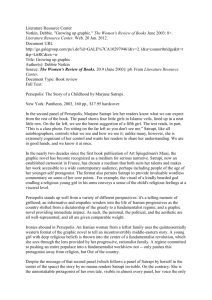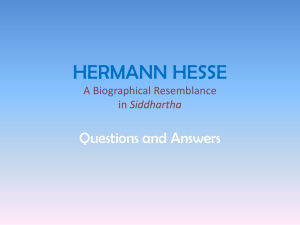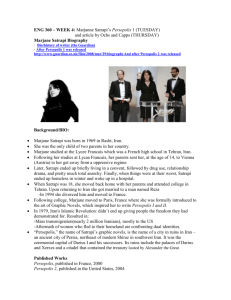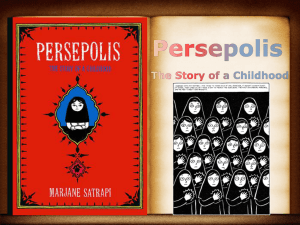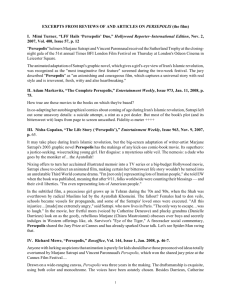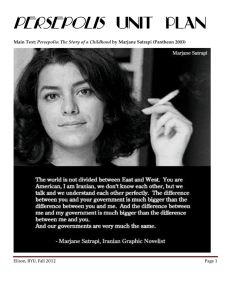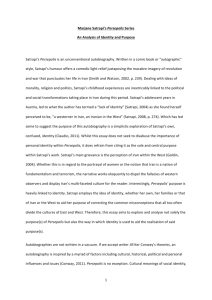Breathing Underwater by Alex Flinn
advertisement
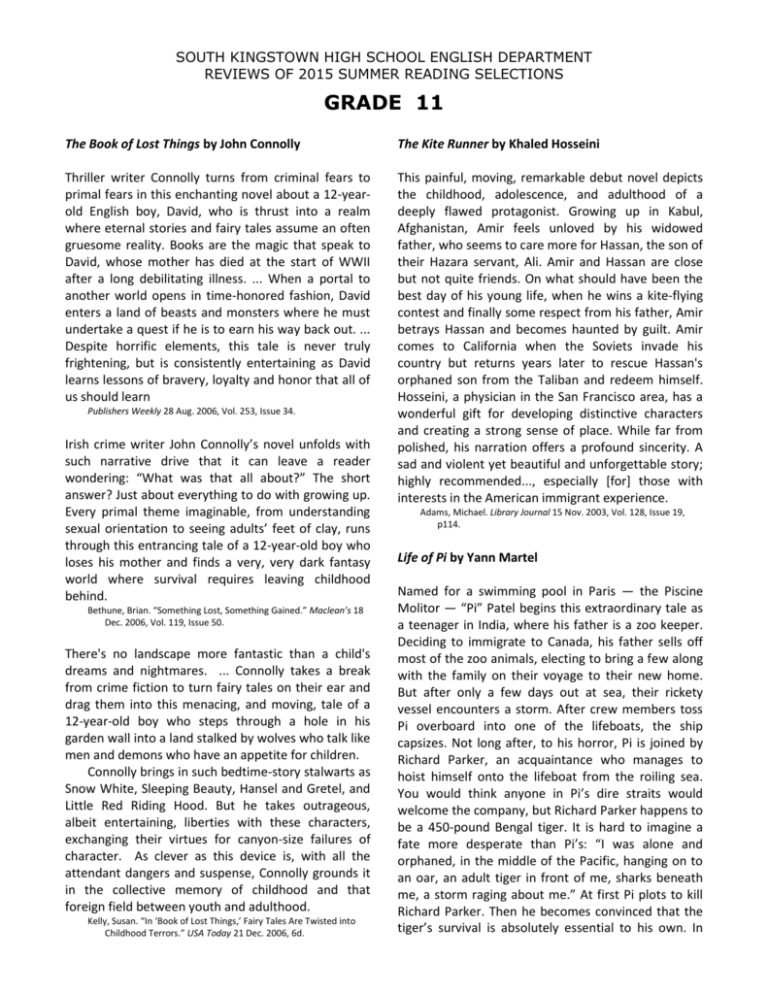
SOUTH KINGSTOWN HIGH SCHOOL ENGLISH DEPARTMENT REVIEWS OF 2015 SUMMER READING SELECTIONS GRADE 11 The Book of Lost Things by John Connolly The Kite Runner by Khaled Hosseini Thriller writer Connolly turns from criminal fears to primal fears in this enchanting novel about a 12-yearold English boy, David, who is thrust into a realm where eternal stories and fairy tales assume an often gruesome reality. Books are the magic that speak to David, whose mother has died at the start of WWII after a long debilitating illness. ... When a portal to another world opens in time-honored fashion, David enters a land of beasts and monsters where he must undertake a quest if he is to earn his way back out. ... Despite horrific elements, this tale is never truly frightening, but is consistently entertaining as David learns lessons of bravery, loyalty and honor that all of us should learn This painful, moving, remarkable debut novel depicts the childhood, adolescence, and adulthood of a deeply flawed protagonist. Growing up in Kabul, Afghanistan, Amir feels unloved by his widowed father, who seems to care more for Hassan, the son of their Hazara servant, Ali. Amir and Hassan are close but not quite friends. On what should have been the best day of his young life, when he wins a kite-flying contest and finally some respect from his father, Amir betrays Hassan and becomes haunted by guilt. Amir comes to California when the Soviets invade his country but returns years later to rescue Hassan's orphaned son from the Taliban and redeem himself. Hosseini, a physician in the San Francisco area, has a wonderful gift for developing distinctive characters and creating a strong sense of place. While far from polished, his narration offers a profound sincerity. A sad and violent yet beautiful and unforgettable story; highly recommended..., especially [for] those with interests in the American immigrant experience. Publishers Weekly 28 Aug. 2006, Vol. 253, Issue 34. Irish crime writer John Connolly’s novel unfolds with such narrative drive that it can leave a reader wondering: “What was that all about?” The short answer? Just about everything to do with growing up. Every primal theme imaginable, from understanding sexual orientation to seeing adults’ feet of clay, runs through this entrancing tale of a 12-year-old boy who loses his mother and finds a very, very dark fantasy world where survival requires leaving childhood behind. Bethune, Brian. “Something Lost, Something Gained.” Maclean’s 18 Dec. 2006, Vol. 119, Issue 50. There's no landscape more fantastic than a child's dreams and nightmares. ... Connolly takes a break from crime fiction to turn fairy tales on their ear and drag them into this menacing, and moving, tale of a 12-year-old boy who steps through a hole in his garden wall into a land stalked by wolves who talk like men and demons who have an appetite for children. Connolly brings in such bedtime-story stalwarts as Snow White, Sleeping Beauty, Hansel and Gretel, and Little Red Riding Hood. But he takes outrageous, albeit entertaining, liberties with these characters, exchanging their virtues for canyon-size failures of character. As clever as this device is, with all the attendant dangers and suspense, Connolly grounds it in the collective memory of childhood and that foreign field between youth and adulthood. Kelly, Susan. “In ‘Book of Lost Things,’ Fairy Tales Are Twisted into Childhood Terrors.” USA Today 21 Dec. 2006, 6d. Adams, Michael. Library Journal 15 Nov. 2003, Vol. 128, Issue 19, p114. Life of Pi by Yann Martel Named for a swimming pool in Paris — the Piscine Molitor — “Pi” Patel begins this extraordinary tale as a teenager in India, where his father is a zoo keeper. Deciding to immigrate to Canada, his father sells off most of the zoo animals, electing to bring a few along with the family on their voyage to their new home. But after only a few days out at sea, their rickety vessel encounters a storm. After crew members toss Pi overboard into one of the lifeboats, the ship capsizes. Not long after, to his horror, Pi is joined by Richard Parker, an acquaintance who manages to hoist himself onto the lifeboat from the roiling sea. You would think anyone in Pi’s dire straits would welcome the company, but Richard Parker happens to be a 450-pound Bengal tiger. It is hard to imagine a fate more desperate than Pi’s: “I was alone and orphaned, in the middle of the Pacific, hanging on to an oar, an adult tiger in front of me, sharks beneath me, a storm raging about me.” At first Pi plots to kill Richard Parker. Then he becomes convinced that the tiger’s survival is absolutely essential to his own. In this harrowing yet inspiring tale, Martel demonstrates skills so well honed that the story appears to tell itself without drawing attention to the writing. Cone, Edward. Library Journal 15 June 2002, Vol. 127, Issue 11, p95. Life of Pi uses incredible images to provide readers with a powerful well-written allegory about life and religion. Pi is an intriguing lead protagonist, but must share top billing with his ocean traveling crony, the fascinating Richard the tiger-hearted. Yann Martel’s story line is extremely deep yet quite simple, as if Rudyard Kipling wrote The Old Man and the Sea. Klausner, Harriet. AllReaders.com. Web. 1 June 2009 <http://www. allreaders.com/Topics/info_13754.asp?BSID=0>. Persepolis by Marjane Satrapi This extraordinary autobiography tells the story of Satrapi’s early life as a girl in late 1970s and early 1980s Iran. Through her young eyes, the reader sees the overthrow of the Shah, the Islamic fundamentalist rise to power, and the war with Iraq. Satrapi was a religious girl who grew up in a progressive family and went to a French school; but after the Islamic revolution, she was forced to wear the veil and ended up rejecting God. Under increasing threat from Iraqi bombings and an oppressive government, Satrapi and her family still managed to enjoy forbidden parties, games, and music (such as Iron Maiden). This fueled Satrapi's own adolescent rebellion, which eventually got her into trouble. Satrapi's simple, cartoony, even cute black-and-white art allows for easy identification with the characters and expertly reflects their varying emotions. When first published in France, where Satrapi now lives, this book won several European comics awards--and it's a prime candidate for American award nominations as well. A remarkable, revealing, and sometimes startling account, this is sure to be one of the most important graphic novels of the year. Highly recommended for older teens and adults. Raiteri, Steve, Library Journal, 03630277, 5/1/2003, Vol. 128, Issue 8. Persepolis is Marjane Satrap’s stunning comic-book memoir of an Iranian childhood dramatically shaped by the Islamic revolution. ... Satrapi's simple blackand-white drawings are pure and powerful. Her chosen point of view keeps the story accessible throughout: all events, even very scary ones, are presented through the eyes of a child — bright, spunky, and naive. ... Because the illustrations have an emotional directness, because the book is often funny, and because the story is told from a child's point of view, you may feel tempted to give this book to smaller children. Don't. I wouldn't give it to anyone under thirteen. There is much that is disturbing (rape and torture) in it. Still, adolescent rebellion in Iran looks a lot like the local variety, and so does family love. You cannot get through Persepolis without asking, What would I do if my world turned upside down? If ever there was a book to promote empathy and a sense of connection, this is it. As Satrapi herself has said: "If people are given a chance to experience life in more than one country, they will hate a little less .... That is why I wanted people in other countries to read Persepolis, to see that I grew up just like other children." Donnelly, Daria. “Studies Abroad.” Commonweal 23 April 2004, Vol. 131, Issue 8. Web. 7 June 2009. Siddhartha by Herman Hesse Set in India, it is the story of a young Brahmin’s search for ultimate reality, reflecting Hesse's interest in Oriental mysticism. Siddhartha's search, which takes him through both profligacy and asceticism, reinforces the idea that wisdom cannot be taught; it must come from one's own inner struggle. The story contains parallels to Buddha’s life, but it is not a fictionalized life of Buddha; Hesse uses the Buddha parallels instead to give his work a legendary and symbolic quality. Benet’s Reader’s Encyclopedia. 1996. From his childhood, Hesse was interested in the Orient, and he visited India in 1911. His mother had been born in that country, and his father was a missionary there. ... He later wrote of his “deep veneration of the spirit of the East, which in Indian or Chinese dress...has become my consolation and prophecy.” Siddhartha has always been one of Hesse’s most popular novels, and, not surprisingly, it has appealed to the East as well as the West. It was translated into nine Indian dialects and also achieved great popularity in Japan. In the elegance of its style and in the simple yet profound philosophy of life it expresses, it is probably the Western novel which best captures the spirit of India. Siddhartha represents the culmination of a long fascination which the Western literary mind ... felt toward the East. Aubrey, Bryan. Masterplots II: World Fiction. Salem Press, Inc., 1987.
